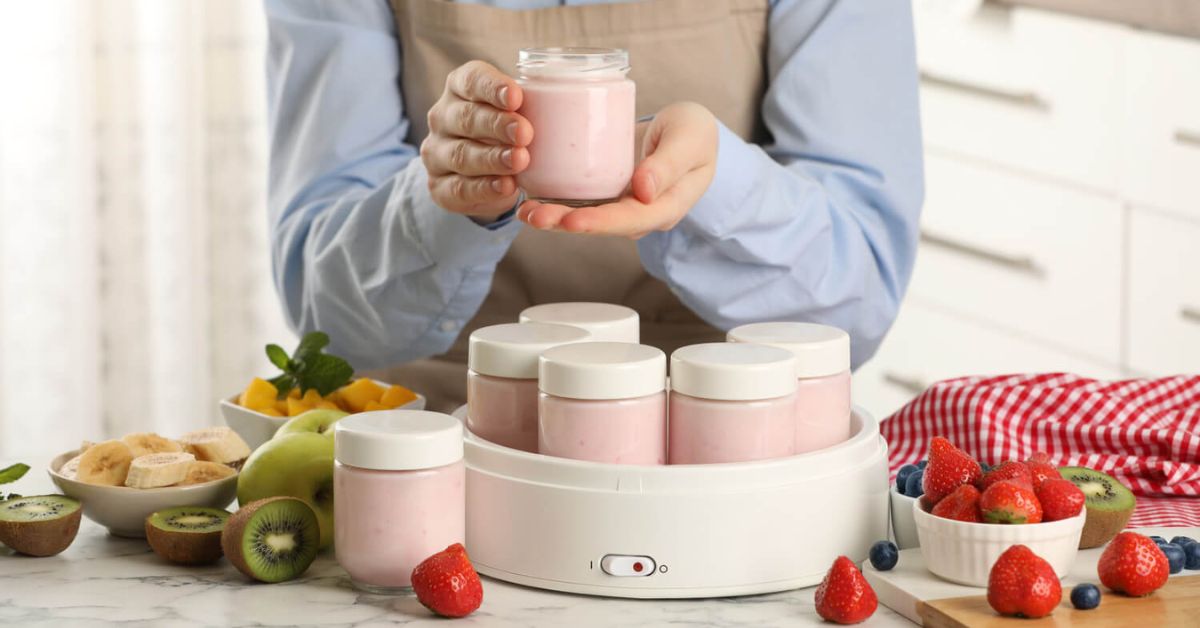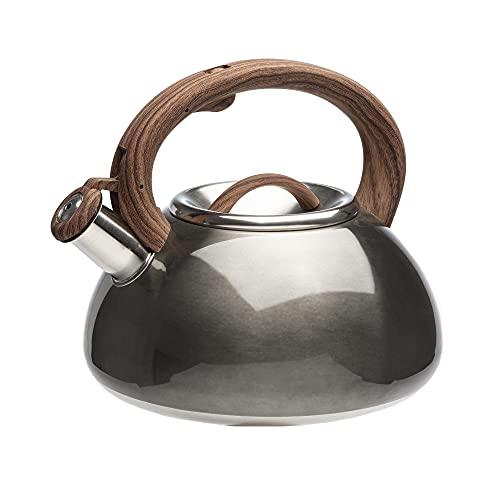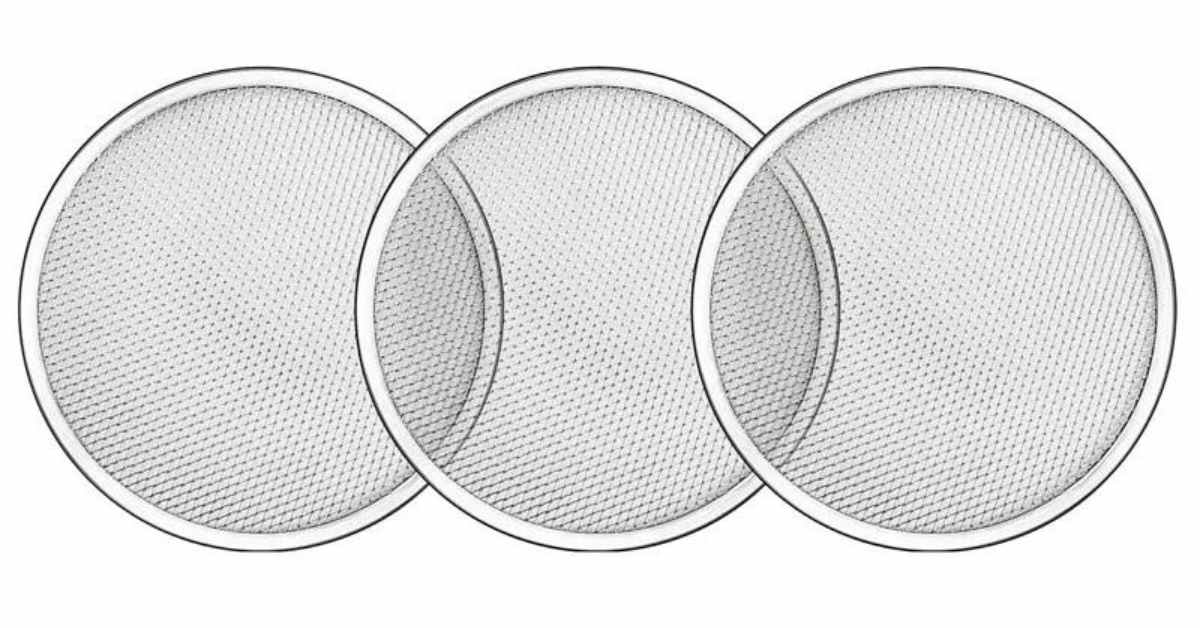Looking for yogurt maker tips? Avoid using slightly old milk, incubating yogurt in your oven after baking, and skipping the heating process with pasteurized milk.
To make thick yogurt, heat the milk longer, add dry milk powder, strain the yogurt, increase the fat content, or use a thickener. It’s not necessary to add water to a yogurt maker, as it can affect temperature settings. Stirring yogurt while making it is not required.
You don’t need a yogurt maker to make yogurt; there are alternative methods. Popular yogurt maker brands include Euro Cuisine, Dash, and Cuisipro. For more tips, tricks, and best practices for making yogurt at home, keep reading.
Table of Contents
ToggleImportance Of Using A Yogurt Maker
Using a yogurt maker is important for several reasons. First, it allows you to control the entire yogurt-making process, ensuring that you have full control over the ingredients and quality of the final product.
Second, it provides consistent results every time, as the yogurt maker maintains a constant temperature throughout the incubation process. This ensures that the yogurt sets properly and reaches the desired level of thickness.
Third, using a yogurt maker helps achieve a smooth and creamy texture for your yogurt, which is often easier to achieve with one.
There are many benefits of using a yogurt maker. One of the main advantages is that it saves you time and effort. With a yogurt maker, you simply need to follow a few simple steps and let the machine do the work for you.
Additionally, using a yogurt maker allows you to experiment with different flavors and add-ins to customize your yogurt to your liking. Moreover, homemade yogurt made with a yogurt maker is typically healthier than store-bought options, as it does not contain any unnecessary additives or preservatives.
Choosing The Right Yogurt Maker
When it comes to choosing the right yogurt maker, there are several factors to consider. Firstly, you need to be aware of the different types of yogurt makers available in the market. These include electric yogurt makers, stovetop yogurt makers, and thermos-style yogurt makers. Each type has its pros and cons, so it’s important to choose one that suits your needs.
Another factor to consider is the price of the yogurt maker. The cost can vary depending on the brand, features, and capacity of the yogurt maker. It’s important to set a budget and choose a yogurt maker that fits within your price range.
Temperature control is also an important factor. Different yogurt recipes require different temperatures for incubation. Some yogurt makers have built-in temperature control, while others require manual monitoring and adjustment.
Additionally, it’s important to consider the size and capacity of the yogurt maker. If you plan on making large batches of yogurt, you’ll need a yogurt maker with a larger capacity. However, if you have limited counter space, a compact yogurt maker might be a better choice.
Proper Ingredients And Equipment For Making Yogurt
When making homemade yogurt, it is important to use high-quality ingredients to ensure the best results. The two main ingredients you will need are yogurt starter and skim milk.
The yogurt starter contains the live cultures necessary to ferment the milk and turn it into yogurt. Skim milk is typically used to make yogurt low in fat, but you can also use whole milk for a creamier consistency.
To make yogurt at home, you will need a yogurt maker or an oven with temperature control. A yogurt maker is specifically designed to create the perfect environment for yogurt fermentation, maintaining a consistent temperature throughout the process.
If you don’t have a yogurt maker, you can use an oven with temperature control to achieve similar results. Additionally, you will need glass jars or containers to store the yogurt during the fermentation process.
Step-By-Step Guide To Making Homemade Yogurt
When it comes to making homemade yogurt, there are a few key steps to follow. First, prepare the milk and starter culture. Heat the milk to a specific temperature, typically around 180°F, to kill any unwanted bacteria. Then, allow it to cool to around 110°F before adding the starter culture. This can be a commercial yogurt or a previous batch of homemade yogurt.
Next, use a yogurt maker for fermentation. Place the milk and starter culture mixture into the yogurt maker and set the timer according to the instructions. The yogurt maker helps to maintain a consistent temperature throughout the fermentation process, which is crucial for transforming the milk into yogurt.
After fermentation is complete, it’s time to cool and store the yogurt. Transfer the yogurt from the yogurt maker into clean containers and refrigerate for at least 4 hours or overnight. This allows the yogurt to thicken and develop its characteristic flavor. Once chilled, the homemade yogurt is ready to be enjoyed!
Common Mistakes To Avoid When Making Yogurt
When making yogurt at home, there are some common mistakes that you should avoid. One of them is using old or expired milk. Make sure to always use fresh milk to ensure the best results. Another mistake is incorrect temperature control.
It is important to maintain the correct temperature throughout the yogurt-making process to ensure that the bacteria thrive and the yogurt sets properly. Additionally, skipping the heating process is another mistake to avoid.
Even if you are using pasteurized milk, heating is necessary to denature the proteins and encourage thickening. By avoiding these mistakes, you can make delicious homemade yogurt with ease.
Tips And Tricks For Perfect Homemade Yogurt
When it comes to making perfect homemade yogurt, there are a few tips and tricks that can help you achieve the best results. One important tip is to heat the milk longer in order to denature the proteins and encourage them to gel and thicken.
Another tip is to add dry milk powder to the mixture, as this can also help thicken the yogurt. Straining the yogurt after it has been made is another way to achieve a thicker consistency. If you prefer a richer yogurt, increasing the fat content by using whole milk or adding a thickener can make a difference.
Experimenting with different flavors and add-ins can also elevate the taste of your homemade yogurt. And if you encounter any issues during the yogurt-making process, troubleshooting common problems can help you overcome them. By following these tips and tricks, you can enjoy delicious and creamy homemade yogurt.
Frequently Asked Questions On Yogurt Maker Tips
What Not To Do When Making Yogurt?
To make yogurt, avoid using slightly old milk, incubate yogurt in the oven right after baking, and skip the heating process with pasteurized milk.
What Is The Secret To Making Thick Yogurt?
The secret to making thick yogurt is to heat the milk longer, add dry milk powder, strain the yogurt, increase the fat content, and add a thickener.
Should I Put Water In My Yogurt Maker?
No, you should not put water in your yogurt maker as it will affect temperature settings. Different temperatures create different styles of yogurt.
Conclusion
When it comes to making homemade yogurt, there are a few key tips and tricks that can elevate your yogurt-making game. First, avoid using slightly old milk and make sure to heat the milk for a longer period to encourage protein coagulation and thickening.
Additionally, you can add dry milk powder or a thickener like gelatin to achieve a thicker consistency. Straining the yogurt can also help remove excess liquid and create a creamier texture. It is important to complete the heating process, even if you are using pasteurized milk.
This step helps to ensure that the yogurt is set properly. Furthermore, refrain from stirring the yogurt while it is incubating, as this can disrupt the fermentation process. Remember, you don’t necessarily need a yogurt maker to make yogurt at home.
With the right temperature control and a few simple tools, you can achieve great results. Whether you choose to use a yogurt maker or not, these tips and tricks will help you create delicious and healthy homemade yogurt. So go ahead, experiment with different flavors, and enjoy the satisfaction of making your yogurt right in your kitchen!






